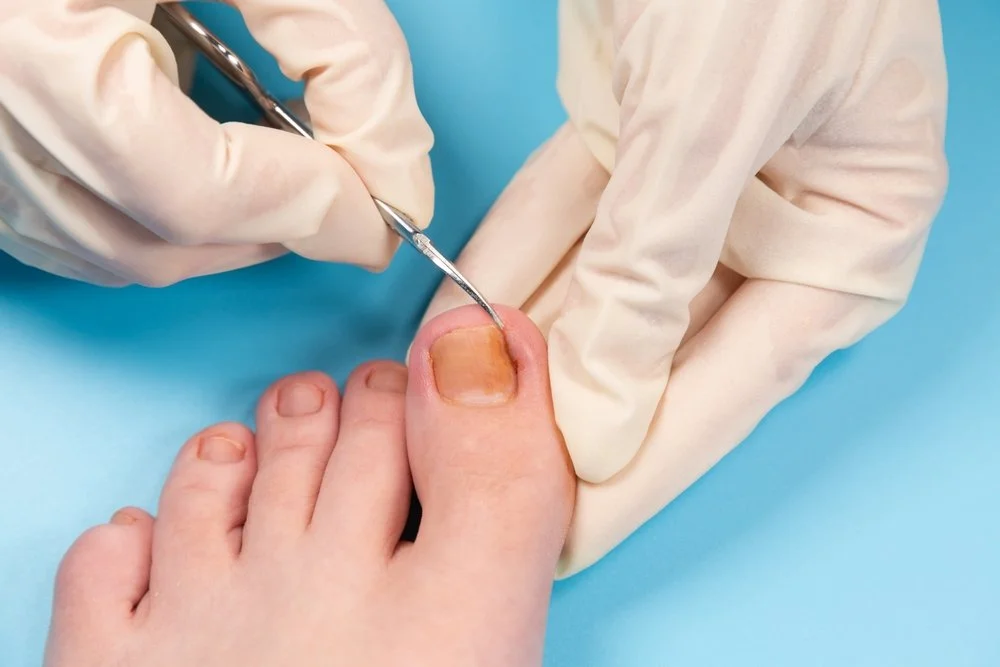What Is the Easiest Way to Remove an Ingrown Toenail?
Quick Answer:
For mild cases, the easiest and safest way to manage an ingrown toenail at home is to soak the foot, gently lift the edge of the nail, and place a soft barrier underneath to encourage proper growth. However, if pain, swelling, or infection is present, professional podiatry care is the safest solution.
What Causes Ingrown Toenails?
Ingrown toenails develop when the corner or side of a nail begins to grow into the surrounding skin. This can cause pain, redness, swelling, and sometimes an infection. Common causes include:
Cutting nails too short or rounding the edges
Wearing tight, narrow, or ill-fitting shoes
Toe injuries or repeated pressure on the nail
Naturally curved or thick nails
They most commonly affect the big toe but can occur on any toenail.
Signs You Might Benefit from Orthotics
Not every ache in the foot means you need orthotics, but here are some clear signs that a professional assessment is worthwhile:
Heel pain that feels sharp in the morning or after rest.
Aching arches or tired feet after standing or walking.
Flat feet or very high arches that cause imbalance.
Shoes wearing down unevenly on one side.
Frequent ankle rolling or instability.
Pain spreading to knees, hips, or lower back that seems linked to how you walk.
Ongoing discomfort after a foot or ankle injury.
Foot issues related to diabetes or nerve conditions.
If any of these sound familiar, orthotics may provide relief and prevent the problem from getting worse.
Can You Treat an Ingrown Toenail at Home?
Not every ingrown toenail can be managed at home. It’s generally safe to try gentle home care if:
There are no signs of infection (such as pus or spreading redness)
You don’t have diabetes, circulation issues, or reduced sensation in your feet
The pain is mild to moderate
Step-by-Step: The Easiest Home Method
For mild ingrown toenails, you can follow these steps to ease discomfort and encourage the nail to grow out properly:
Soak your foot – Use warm water with mild soap or Epsom salt for 15–20 minutes, 2–3 times daily. This softens the skin and nail.
Dry carefully – Pat the area dry with a clean towel.
Lift the nail edge gently – Using clean hands and sterile tweezers or floss, carefully raise the nail corner without forcing it.
Insert a soft barrier – Place a small piece of cotton or dental floss under the nail to keep it lifted. Replace after each soak.
Apply antiseptic – Use a mild antiseptic or antibiotic ointment and cover with a light bandage.
Wear open or roomy shoes – Avoid pressure on the toe by choosing footwear with plenty of space.
With consistent care, mild cases usually improve within a couple of weeks.What to Expect With Orthotics
When to Seek Professional Help
Home care won’t always solve the problem. You should see a podiatrist if:
The pain becomes severe
You notice infection (redness, pus, swelling, warmth)
You have diabetes or circulation concerns
The toenail repeatedly grows back ingrown
Professional Treatment Options
At a podiatry clinic, several treatments are available depending on the severity of the ingrown toenail:
Partial nail removal – The ingrown section of the nail is carefully removed under local anaesthetic.
Complete nail removal – In more severe cases, the whole nail may be removed to allow proper healing.
Nail bracing or splinting – Special devices are used to guide the nail into a healthier growth pattern.
These procedures are quick, safe, and effective at preventing recurrence.
you can also read : How does a podiatrist remove an ingrown toenail?
How to Prevent Ingrown Toenails
The easiest way to avoid the problem altogether is through good foot care habits:
Cut nails straight across, not too short, and avoid rounding the corners
Wear shoes with a wide toe box that doesn’t squeeze your toes
Keep feet clean and dry
Check your toenails regularly if you’re prone to issues
Final Word
Ingrown toenails can be painful, but you don’t have to live with the discomfort. If home treatment isn’t helping, or symptoms are worsening, seeing a qualified podiatrist in Baulkham Hills can provide fast relief and prevent further complications.
At Podhills Podiatry, we offer gentle, personalised ingrown toenail treatment to help you stay active and pain-free.
Book your appointment today — your feet will thank you.
FAQs
-
You can manage mild cases at home with warm foot soaks and gentle lifting of the nail. However, do not attempt to cut or dig into the nail. This can worsen the condition or cause infection. If pain is persistent, visit a podiatry clinic for safe care.
-
Signs of infection include redness, swelling, heat, pus, or increasing pain. If you notice these symptoms, book an appointment for ingrown toenail treatment as soon as possible. Infection can spread if left untreated.
-
No. Ingrown toenail procedures are done under local anaesthetic, so you won’t feel pain during the treatment. Most patients experience relief immediately after the procedure.
-
Recovery is usually quick. Most people resume normal walking the same day and are fully comfortable within a few days. Your podiatrist will provide aftercare instructions to ensure smooth healing.

